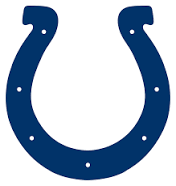Chicago Bears
- Paul Grange

- Sep 27
- 3 min read

In the early 1920s, when George Halas brought his Decatur Staleys to Chicago, he wanted more than just a football team. He wanted a name and an identity that would root the sport in the city’s heart. The team shared a home with the Chicago Cubs at Wrigley Field, and Halas saw the perfect connection. If baseball players were “Cubs,” smaller and lighter, then football players — heavier, tougher, more brutal — should be “Bears.” With that simple twist, a dynasty was born.
The Bears became one of the NFL’s founding pillars. Their legacy stretches from the leather-helmet days of the 1920s to Super Bowl XX in 1985, when Mike Ditka’s team — powered by a bruising defence dubbed the “Monsters of the Midway” (Midway being a park in Chicago) — crushed the New England Patriots.
No story of the Bears’ rise, however, is complete without Red Grange. Known as the “Galloping Ghost,” Grange was the first true superstar of professional football. In 1925, fresh off a dazzling college career at Illinois, he signed with the Bears. His arrival brought instant legitimacy to the fledgling NFL, drawing crowds of over 70,000 at a time when pro football was still dismissed as a sideshow compared to the college game. Grange’s speed, grace, and fame turned the Bears into a national spectacle. Without him, it’s doubtful the NFL would have taken root in the public imagination quite so quickly. His legacy still echoes: the player who proved professional football could be both a sport and an entertainment empire.
And towering over it all was George Halas himself. Known simply as “Papa Bear,” Halas wasn’t just the founder of the Bears — he was one of the men who built the NFL. At the 1920 meeting in Canton, Ohio, he helped form the league and then spent six decades shaping it. He pioneered tactical revolutions like reviving the T-formation with man-in-motion in the 1940s, which changed the way offence was played. His Bears showcased it in brutal fashion, famously crushing Washington 73–0 in the 1940 NFL Championship, the most lopsided score in league history.
But Halas’s genius wasn’t limited to the field. He understood that for pro football to thrive, it needed spectacle, stability, and fairness. He tied the Bears’ identity to Chicago’s working-class grit, scheduled big games in iconic venues, and used stars like Grange to market the sport. In league governance, he pushed for revenue sharing and national television deals that ensured small-market teams could survive — laying the foundations of the NFL’s competitive balance and financial power. Few men did more to turn football from a barnstorming curiosity into America’s favourite sport.
From Halas to Grange to Walter Payton, the Bears have given football some of its most enduring icons. Payton, known as “Sweetness,” combined grace and power, rushing for over 16,000 yards between 1975 and 1987. He wasn’t just a record-breaker; he embodied the toughness and character of Chicago itself. Today, the NFL’s Man of the Year award bears his name.
Every Bears jersey also carries the letters “GSH” on its sleeve. They stand for George S. Halas, the founder, player, coach, and owner who defined the franchise for over six decades. The GSH is a constant reminder that the Bears are not just another franchise — they are part of the league’s very foundation.
And then there’s Soldier Field. Opened in 1924 as a memorial to American servicemen who died in World War I, it became the Bears’ permanent home in 1971. Its colonnades and lakefront setting gave it gravitas, making it more than a stadium — it was a civic monument. Renovated in 2003, controversially modernised but still iconic, Soldier Field remains one of the most historic grounds in American sport. For decades, the freezing winds off Lake Michigan have battered players and fans alike, forging the Bears’ identity in steel and cold.
Chicago itself has always been a city of grit and muscle — a port that unlocked America’s interior, a hub of cattle markets, grain elevators, railways, and industry.
Their football team are a cornerstone of the NFL, a reflection of the city’s strength, and a franchise built on the vision of Halas, the spark of Grange, the brilliance of Payton, and the roar of Soldier Field.







Comments